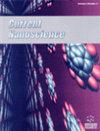基于纳米药物的靶向疗法可缓解铁中毒引起的肝脏毒性
IF 1.5
4区 材料科学
Q4 BIOTECHNOLOGY & APPLIED MICROBIOLOGY
引用次数: 0
摘要
:铁是生物体不可或缺的无机元素,具有多种代谢活动。糖蛋白铁蛋白和转铁蛋白协助将铁运往身体各部位,并用于储存铁。在铁的吸收、储存和排泄方面,应保持平衡。铁突变是一种依赖铁的细胞死亡形式,具有脂质过氧化物堆积和产生 ROS 等特征。它在视觉上和生物化学上有别于其他形式的细胞死亡。许多癌细胞通过控制不同的细胞存活途径来阻断铁凋亡。与健康的正常细胞相比,癌细胞更依赖于铁。被称为癌症干细胞的肿瘤细胞亚群具有类似干细胞的特征。它们负责转移和复发。肝脏在人体解毒过程中起着重要作用,也是储存铁的主要器官。许多肝脏疾病经常伴随着过量的铁积累。由于铁沉积过多,肝脏更容易受到氧化损伤,偶尔会导致肝功能衰竭。化疗需要使用多种药物来治疗癌症,可能会对身体的其他细胞造成危害。铁质沉积症和高铁积累可能会损害肝功能。量身定制的给药方法可改善铁过度积累的影响,并与肝损伤产生有利的关联,从而增强肝功能。本文章由计算机程序翻译,如有差异,请以英文原文为准。
Nano-drug-based Targeted Therapy Alleviates Ferroptosis-induced Liver Toxicity
: Iron is an essential inorganic element for an organism, with several metabolic activities. The glycoproteins ferritin and transferrin, which assist in carrying iron to various body parts, are used to store iron. In terms of iron uptake, storage, and excretion, equilibrium should be preserved. Ferroptosis is an iron-dependent form of cell death with traits like lipid peroxidation buildup and ROS generation. It is distinct from other forms of cell death visually and biochemically. Many cancer cells block ferroptosis by controlling different cell survival pathways. Compared to healthy, normal cells, cancer cells are more dependent on iron. A subgroup of tumor cells known as cancer stem cells has stem-like characteristics. These are in charge of metastasis and recurrence. The liver plays a significant part in the body's detoxifying process and is the primary iron storage organ. Numerous liver disorders are frequently accompanied by excessive iron accumulation. Due to excessive iron deposits, the liver is more vulnerable to oxidative damage, which can occasionally result in liver failure. Chemotherapy, which involves administering several medications to treat cancer, may be hazardous to the body's other cells. The ferroptosis condition and high iron accumulation can potentially impair liver function. A tailored drug delivery method may ameliorate the impact of excessive iron accumulation and favorably correlate with liver damage, consequently enhancing liver function.
求助全文
通过发布文献求助,成功后即可免费获取论文全文。
去求助
来源期刊

Current Nanoscience
工程技术-材料科学:综合
CiteScore
3.50
自引率
6.70%
发文量
83
审稿时长
4.4 months
期刊介绍:
Current Nanoscience publishes (a) Authoritative/Mini Reviews, and (b) Original Research and Highlights written by experts covering the most recent advances in nanoscience and nanotechnology. All aspects of the field are represented including nano-structures, nano-bubbles, nano-droplets and nanofluids. Applications of nanoscience in physics, material science, chemistry, synthesis, environmental science, electronics, biomedical nanotechnology, biomedical engineering, biotechnology, medicine and pharmaceuticals are also covered. The journal is essential to all researches involved in nanoscience and its applied and fundamental areas of science, chemistry, physics, material science, engineering and medicine.
Current Nanoscience also welcomes submissions on the following topics of Nanoscience and Nanotechnology:
Nanoelectronics and photonics
Advanced Nanomaterials
Nanofabrication and measurement
Nanobiotechnology and nanomedicine
Nanotechnology for energy
Sensors and actuator
Computational nanoscience and technology.
 求助内容:
求助内容: 应助结果提醒方式:
应助结果提醒方式:


